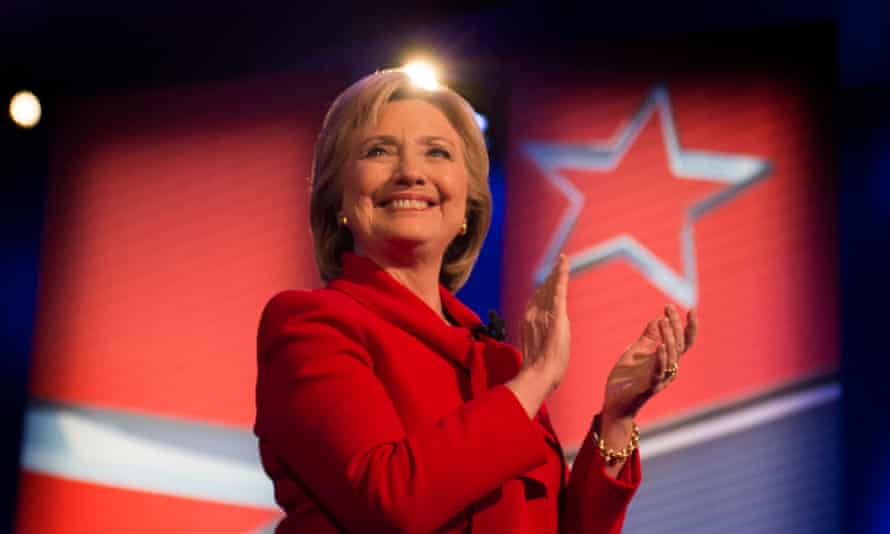When Theresa May appeared in US Vogue in 2017, even her deliberately anodyne choice of a posh-end-of-the-high-street dress by British label LK Bennett did not prevent this newspaper calling the Annie Leibovitz shoot a “defining moment” which, “like Margaret Thatcher in the tank turret looking like a cross between Boudicca and Lawrence of Arabia … might easily become a signifier of all that is flawed in her prime ministerial style”. Michelle Obama’s bare upper arms appeared no fewer than three times on the cover of Vogue during her White House years, causing pearl-clutching uproar at the sight of her toned triceps.

A political Vogue appearance is such a white-hot issue that it causes controversy even when it doesn’t happen. Donald Trump recently weighed in to complain about “elitist” Vogue having snubbed Melania, notable by her absence from the magazine over the past four years.
Vice-president-elect Kamala Harris’s Vogue debut, in the February issue of the magazine’s US edition, is the latest in a long line of political covers to have caused a media storm. Sunday’s release on social media of the rather different newsstand and digital covers quickly fuelled a wave of criticism. Had Harris’s skin tone been “washed-out” by thoughtless or even culturally insensitive lighting? Was it disrespectful, on the newsstand cover, to present Harris wearing her battered Converse trainers, rather than giving her a stately makeover? Was Harris’s team led to believe that the more formal portrait in Michael Kors tailoring, apparently destined for digital editions, would appear on newsstands, too?
Vogue has sprung to the defence of images that show Harris at “her casual best” in “styling choices that were her own”. Tyler Mitchell, who in 2018 became the first African American photographer to shoot a US Vogue cover, explains in an accompanying online article that a much-maligned pink-and-green backdrop was chosen to honour Harris’s sorority, Alpha Kappa Alpha, of which Mitchell’s aunt was also a member. Mitchell, who “grew up from a young age deeply understanding the rich history of these sororities and their significance … wanted the set design to pay homage to that history, to [Harris’] status as an AKA, and Black sororities and sisterhoods worldwide.”
A Vogue appearance is rarely anything but controversial for women in politics, but the invitation remains apparently irresistible, nonetheless. To be a cover star – and especially for Vogue – is to be the avatar of a cultural moment. To have your image publicly displayed beneath that Vogue font is perhaps the closest any public figure will ever get to having their profile on a stamp or, while still living, their face on a banknote. And in an increasingly atomised media landscape, a Vogue cover is one of the few platforms with the cut-through to reach disparate audiences. It is shared on Instagram, discussed in newspapers, and on display at the supermarket checkout.

When Hillary Clinton appeared on the cover of Vogue in 1998 it was in a floor-length velvet gown and pearl drop earrings, smiling beatifically from a stateroom banquette beside an urn spilling red roses. The letters of Vogue were spelt out – in gold – directly on top of the curlicued gilt frame of one of the wall’s oil paintings. The message was clear: a Vogue cover is as close to an official portrait as pop culture gets. Which is why the row around Vogue’s latest cover is not really about Mitchell’s lighting rig, or Harris’s shoes. Rather, these portraits are a lightning rod for a country grappling with a moment of cultural reckoning around gender, race and power.
The relaxed and smiling images were taken in the dizzy post-election relief of November, but landed online a few days after the storming of the Capitol had dialled the emotional tone of politics back up to febrile. This, perhaps, has left them out of step with the particular moment. In the more casual of the two portraits, Harris’s stretchy black trousers are a little wrinkled around the knees – just a tiny imperfection, but the kind that you might expect to have been smoothed out by a watchful assistant before the shutter clicked. Perhaps the informality was judged by the editorial team to chime better with the era of WFH dressing than slick tailoring. Perhaps it was intended to channel Harris’s now famous leggings-clad victory moment. (“We did it, Joe!”).
Certainly, any likeness to the 2009 cover for Newsweek of Republican former vice-presidential candidate Sarah Palin, posing in her gym gear, is unintentional. Vogue editor-in-chief Anna Wintour, who after a close relationship with the Obamas has been in self-imposed exile from the circles of political power during Trump’s presidency, will surely be looking to align herself as friend and ally of the incoming Democrat administration.
The current British Vogue is more overtly political than ever before, and wears its activist heart on its cover – the magazine equivalent of its sleeve. Recent cover stars have included frontline workers and the Man United and England striker Marcus Rashford who, as one of the most high-profile public figures driving legislation for progressive social change, surely counts as a political figure – and the prime minister of New Zealand, Jacinda Ardern, who was featured among 15 Forces for Change on the August 2019 cover.
British politicians, however, have been notable by their absence. And should a flattering invitation find its way to a Westminster in-tray, it should be approached with caution. A Vogue cover is always a moment, but not always a flattering one.
from Lifestyle | The Guardian https://ift.tt/2Lm0thL
via IFTTT

comment 0 Comment
more_vert